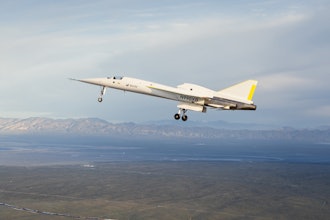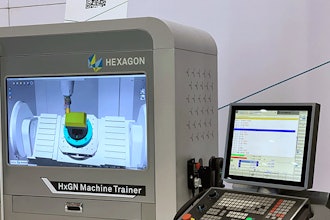3D Printed Drone Flies Off Production Line
Researchers at Nanyang Technological University (NTU) in Singapore have 3D printed a ready-to-fly drone with aerospace-grade material. Now, this is important, because while many drone components have been 3D printed in the past, we're talking about a mission-capable drone pretty much as soon as the print bed cools.
NTU developed the drone in cooperation with Stratasys Asia Pacific. One of the team’s toughest challenges was finding electronics that could withstand an extremely hot printing process that reached up to 160°C. They modified commercial grade electronics, and designed some custom housings, that were placed within the drone chassis during three different production pauses. Even though they stopped the print to add the electronics, the drone was still completed in less than 14 hours.
The drone was printed in Stratasys's ULTEM 9085, a high strength, lightweight, and proprietary fused deposition modeling thermoplastic that is certified for use in commercial aircrafts. It was selected because of its high strength-to-weight ratio and FST (flame, smoke and toxicity) rating. The drone can support more than 60kg of weight suspended from its structure.
The drone can't exactly fly off the production line just yet. The team had to add motors and mount the propellers after the entire chassis was completed. In their next version, the team wants to make the design more durable, lighter weight and improve the flight dynamics.
Mares in Space
Everyone seems excited about the impending trips to Mars and space tourism, all achievable within our lifetime. And while it’s fun daydream fodder, some of the logistics of space travel need to be worked out before we're taking the family on a balloon ride into the atmosphere.
One challenge is muscle strength, which decreases during spaceflight, because gravity isn’t constantly stimulating our muscles. Researchers need to know why our muscles atrophy, and how muscles behave in space. So, they developed the Muscle Atrophy Research and Exercise System, or Mares.
MARES is a three-in-one muscle-measurement machine on the International Space Station that monitors astronauts’ muscles as they work out. Mares will chart fine motor control and give a precise overview of muscle torque and speed as astronauts perform exercises while attached to an array of sensors.
This week, ESA astronaut Thomas Pesquet is installing the machine in Europe’s Columbus space lab and he will be the first test subject. Mares is actually a pretty big machine and will take Pesquet multiple days to unpack and set up.
In a recent FLICKR post, the astronaut posted a photo of him setting up what he called a “beast of a machine.” Luckily, the weightlessness seems to be helping him out.
Engineer Will Be Subpoenaed Over Leaning Tower of San Francisco
According the the San Francisco Business Times, a UC Berkeley engineer who was one of two experts who said that the Millennium Tower's design was structurally sound will be subpoenaed after refusing to testify.
Professor Jack Moehle and a peer review colleague were hired by DiSimone Consulting Engineers to see if the Millennium Tower's foundation was structurally sound. In 2006, Moehle said that the building's design was to code, and his opinion helped Millennium Partners secure building permits. The subpoena will force him to testify.
According to the AP, the 58-story, $350 million dollar high-rise has sunk nearly 16 inches and it is tilting several inches to the northwest.
Engineers previously thought that the building was only sinking about 1-inch per year. But earlier this week, data from European Space Agency satellites showed that it is sinking at almost double that rate.
The leaning tower of San Francisco is the subject of numerous lawsuits involving the developer, the city and scared owners who invested in these multi-million dollar apartments.
This is Engineering By Design with David Mantey.






















